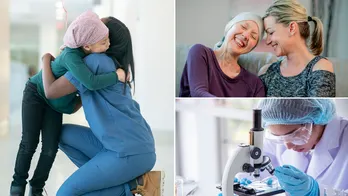Toasted Skin Syndrome Just One Risk of Using Hot Water Bottles For Warmth
Who doesn't love to cosy up with a hot water bottle during the colder months? Hot water bottles are a quick, easy and cost effective way of staying warm in winter – but they can also cause serious injury.
In the UK, there were 5,944 burn injuries from hot water bottles between 2014 and 2023.
For example, in 2022, Sharon Portingale sustained third degree burns after taking her hot water bottle to bed. In 2021, Helen Powell was scalded after the hot water bottle she was using to relieve back pain burst.
But burns and scalds aren't the only type of injuries risked by those who use hot water bottles.
Toasted skin syndrome is also known as erythema ab igne (redness from fire).
Exposure to heat sources, such as hot water bottles, heat pads, space heaters and even laptops, can result in a red fishnet pattern on the skin. This is caused by the dilation of the skin's small vessels as they try to cope with the heat.
Usually, the condition resolves soon after removal of the heat source. However, prolonged and persistent heat exposure can cause skin to thin and become hyperpigmented – when some patches of the skin are darker than others.
The hyperpigmentation is caused by damage to the elastic fibres of the skin and the release of melanin from skin cells.
This damage can be permanent but treatments such as laser therapy or topical creams containing 5-fluouracil can help.
Delayed diagnosis of toasted skin syndrome and persistent exposure can also lead to cancers, such as basal cell carcinoma, neuroendocrine carcinoma and low-grade lymphoma.
Some people are more susceptible to heat damage. For example, those with sickle cell disease and chronic pain are more likely to suffer from erythema ab igne or significant burn injuries.
People with diabetes who have circulatory complications which affects their temperature regulation may feel the cold more and therefore use heating aids regularly. But diabetics with circulation issues may also experience poorer sensation and may not notice the skin heating until they suffer burns.
Do not use hot water bottles for keeping babies warm or to pre-heat their sleeping space. Newborns have brown fat to help them maintain a healthy body temperature and protect them from hypothermia.
At birth, brown fat accounts for about 5% of babies' body weight and is held around key organs to generate heat.
Staying warm
So, how to stay warm without using a hot water bottle?
In bed, weighted blankets help prevent warm air being forced out every time you move under them. But if you're sitting down, keep your feet up and away from the floor – usually the coldest part of the room.
Then, rather than wearing one thick coat or jumper, it's worth remembering that layering clothes is far more effective at trapping air and holding heat.
Your fingertips have twice as many nerve fibres as your palms and are susceptible to the cold.
So wearing gloves, even inside, can help reduce the demand on your body to distribute heat to the hands – and to trap heat produced by the body against your skin.
Moving around every now and then will generate heat and help circulate the warm blood from your core to extremities, like fingers and toes.
If you do use a hot water bottle, do not use boiling water and ensure you add cold water to the bottle. Ideally, the temperature should be around 50°C-60°C.
Finally, you can decrease the risk of tissue damage when using hot water bottles or heat pads by distributing the heat evenly – move them around so the heat isn't focused on a single area.
Adam Taylor, Professor and Director of the Clinical Anatomy Learning Centre, Lancaster University
This article is republished from The Conversation under a Creative Commons license. Read the original article.



